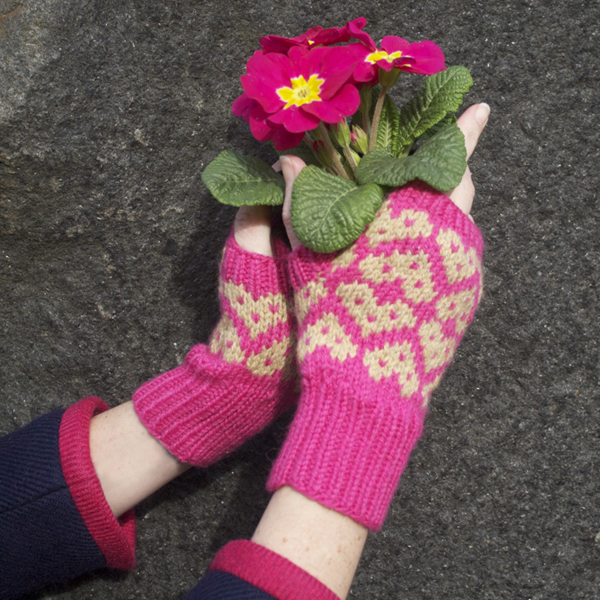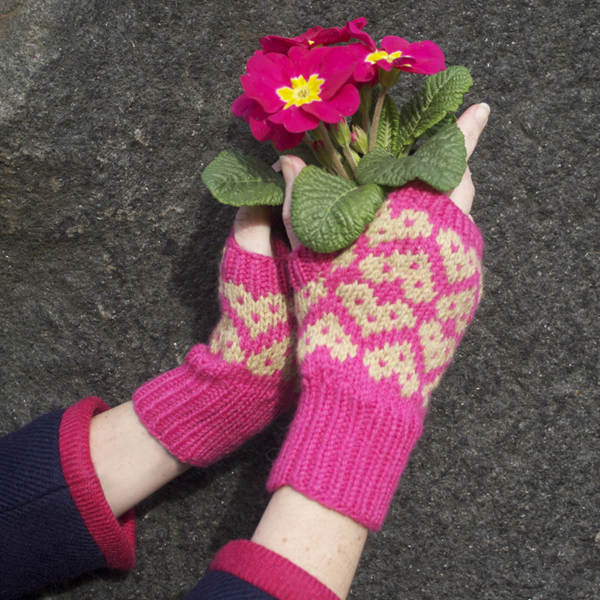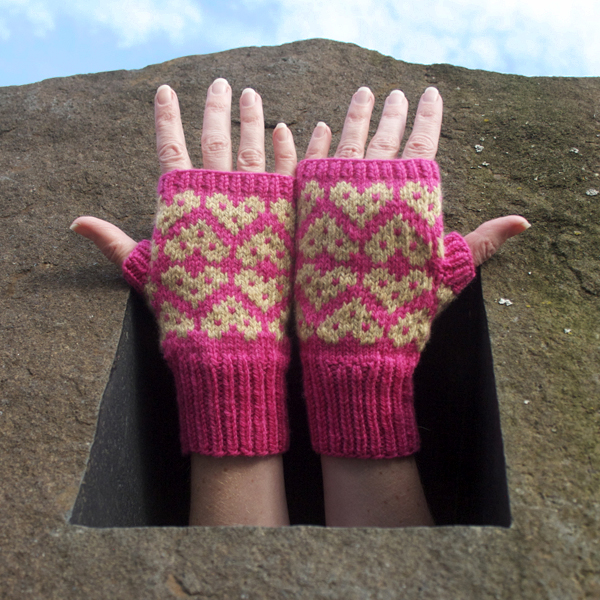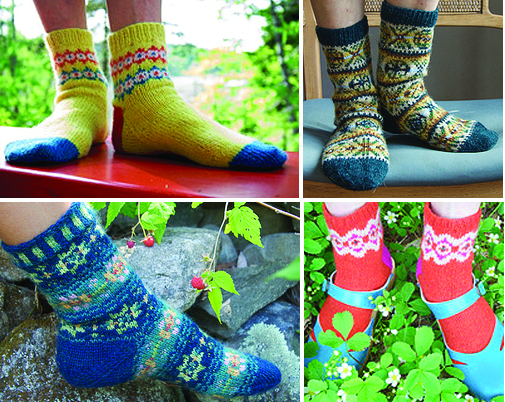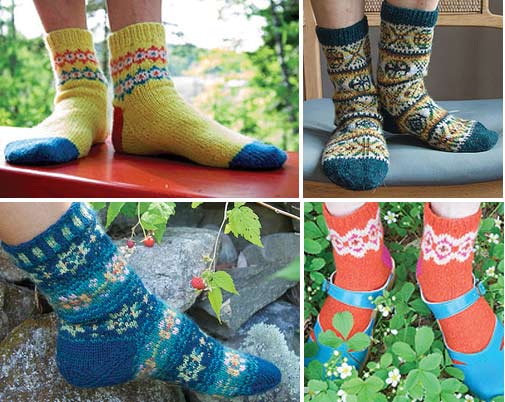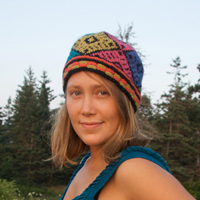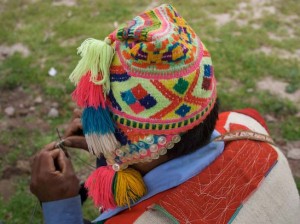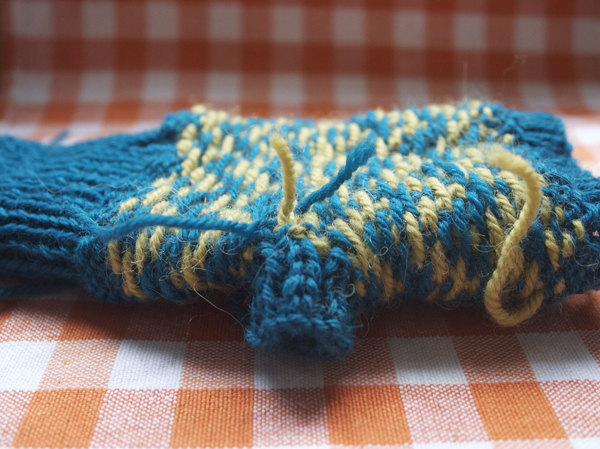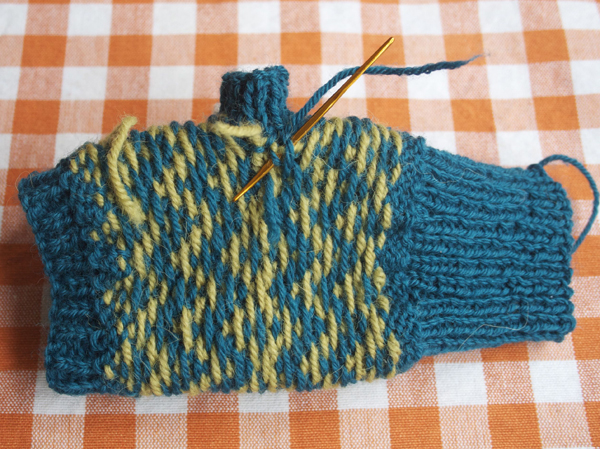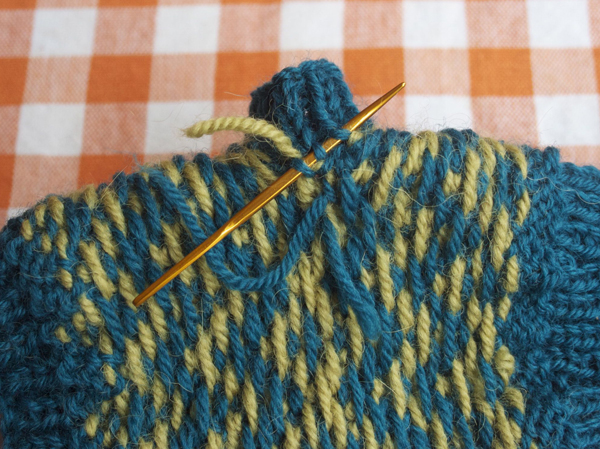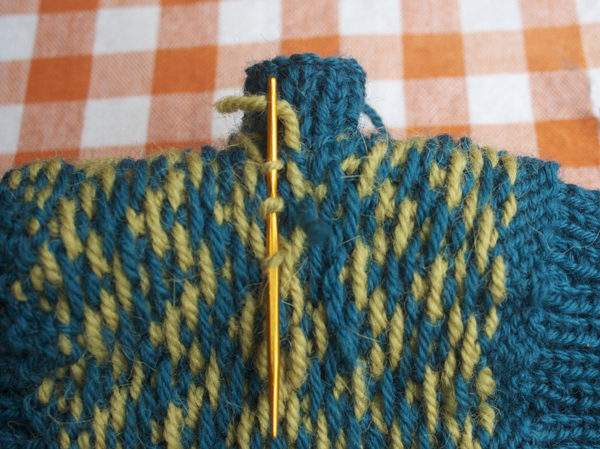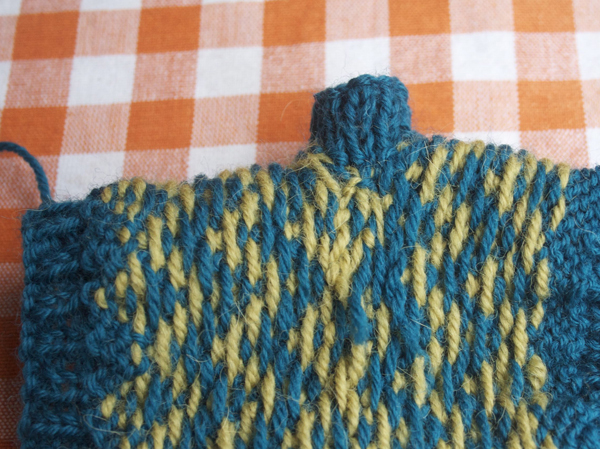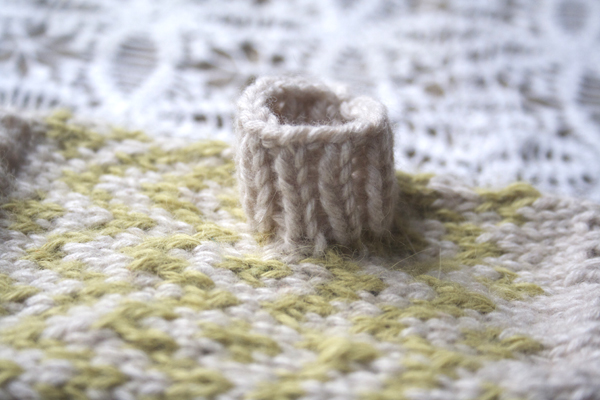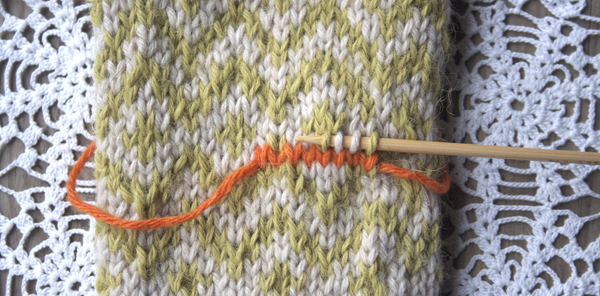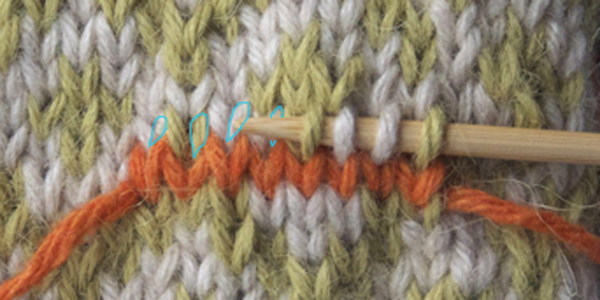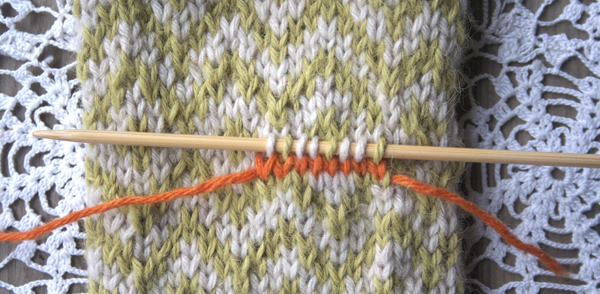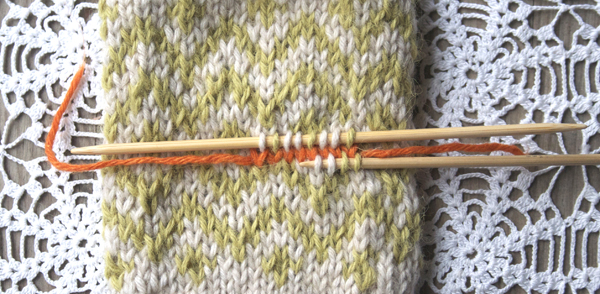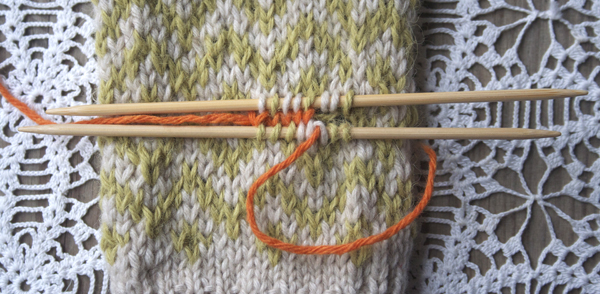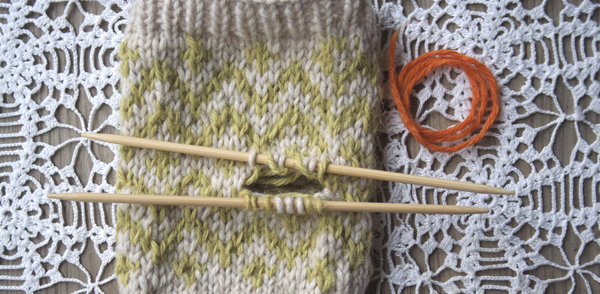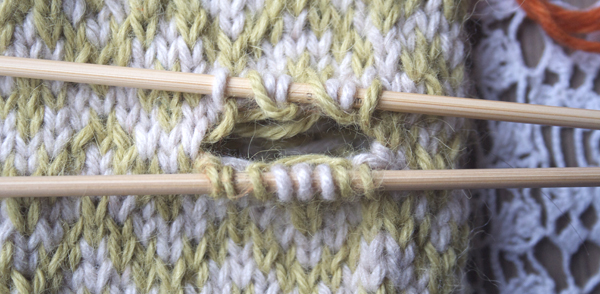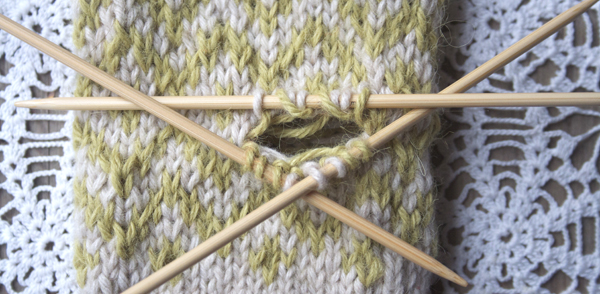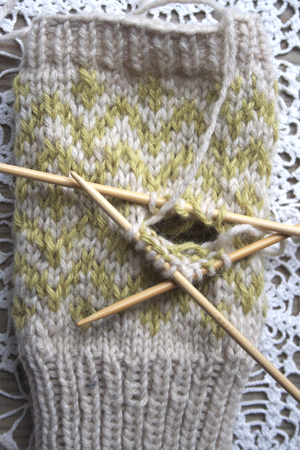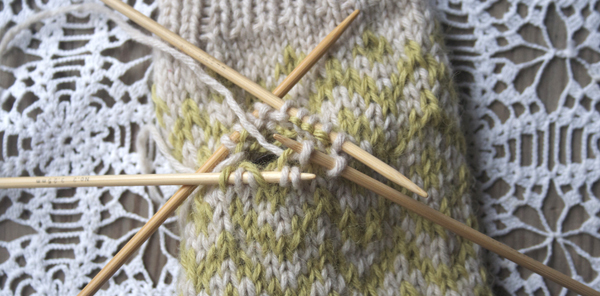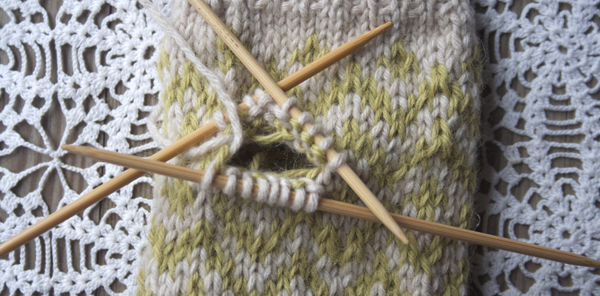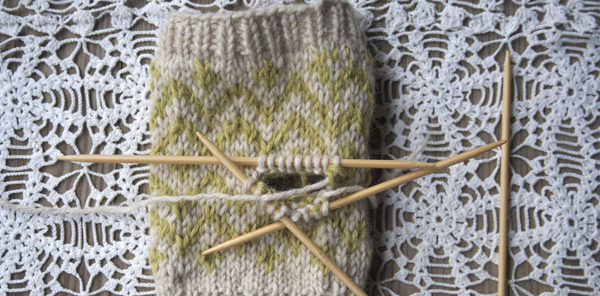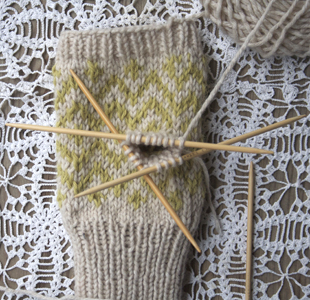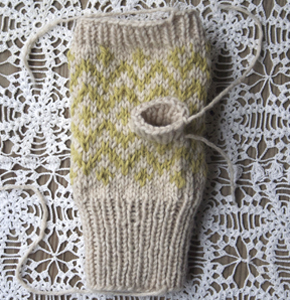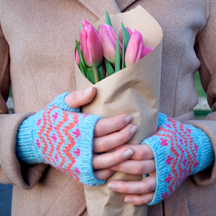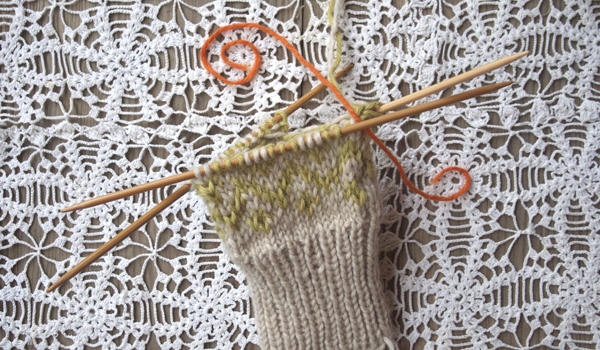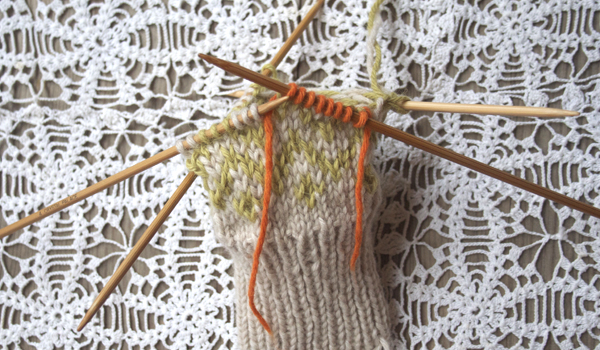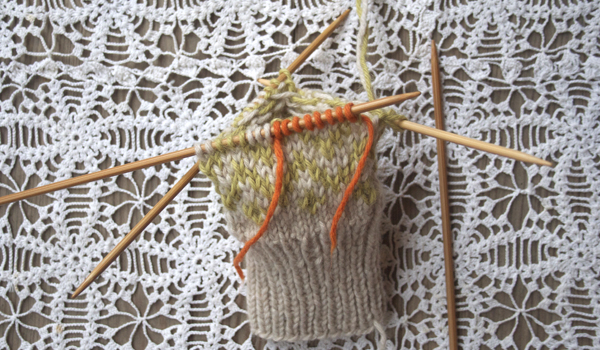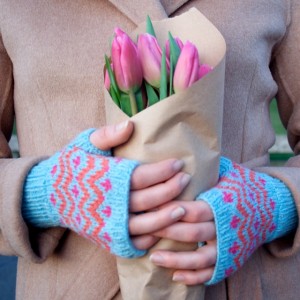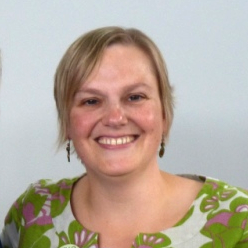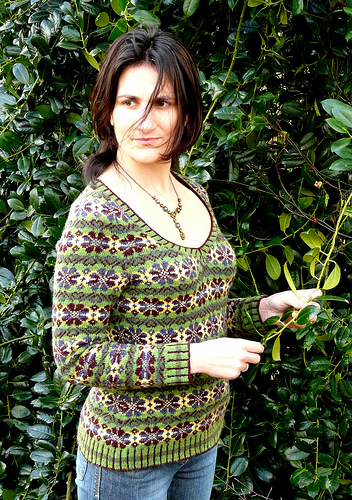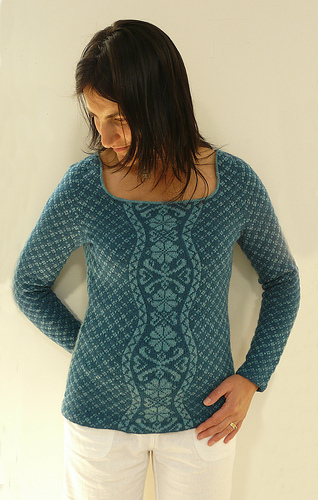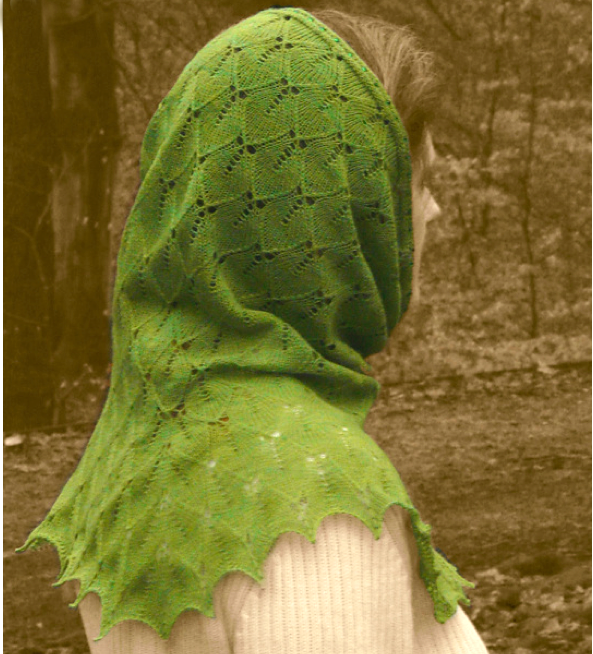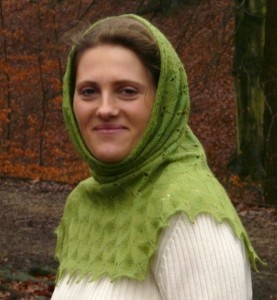Free For Three! Call me crazy but I’ve got an I Love You giveaway for 3 days only!
I was hungry and needed a sweetie. I wanted sugar sprinkled heart-shaped Valentine’s cookies. When none were to be found I whipped up these little cookie hearted mitts. They kept my mind off the real thing. Best thing? The next day I attended The Nordic Museum’s Knit Cafe, held the first Sunday of every month. Here, besides sensational knitters of all stripes you’ll find delicious coffee and delectable treats, including … sugar-sprinkled heart-shaped Valentine’s cookies!!!
Knit Cafe’s knitters are a welcoming group of all skill levels, from absolute beginners to world renowned experts like friendly Evelyn A. Clark, lace knitter of the highest order. I know, Evelyn A.Clark…be still my heart..and as you would imagine, she is kind and generous. This group is an intrepid lot too, having gone on many knitterly travels, including Iceland many times over!!!! The heart continues to beat wildly! ( Have you heard about Gudrun and I? That is another post…soon! ) Knit Cafe knitters are a game bunch of knitters, agreeable to becoming hand models at the drop of a hat! In chilly windy weather, balancing atop wiggly chairs. Not only that…Mary, for that is the owner of the lovely hands pictured, Mary is a conceptual stylist who came up with the powerful image below! Hail Mary!
So as a thank-you to all my readers, because I love you, get My Heart Cookie Mitts pattern here, based on motif #147 in my book 200 Fair Isle Motifs: A Knitter’s Directory.
